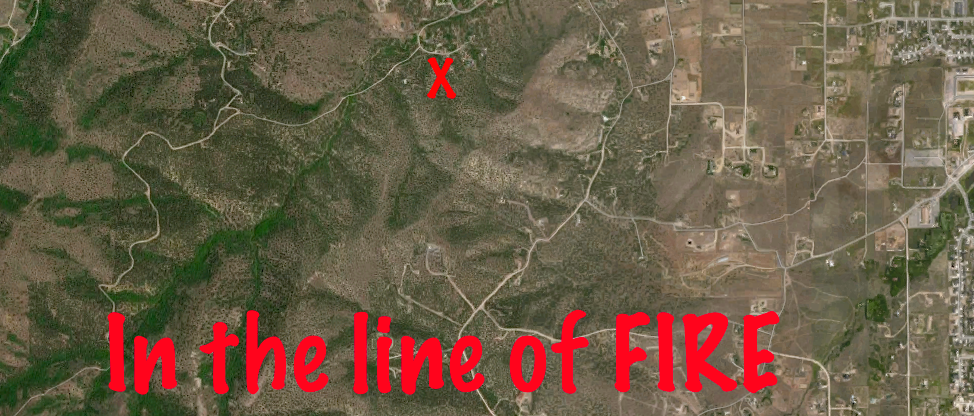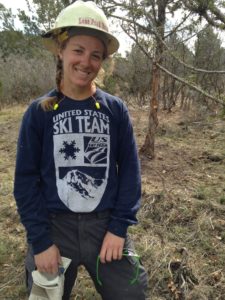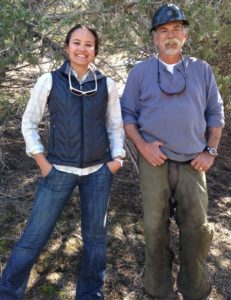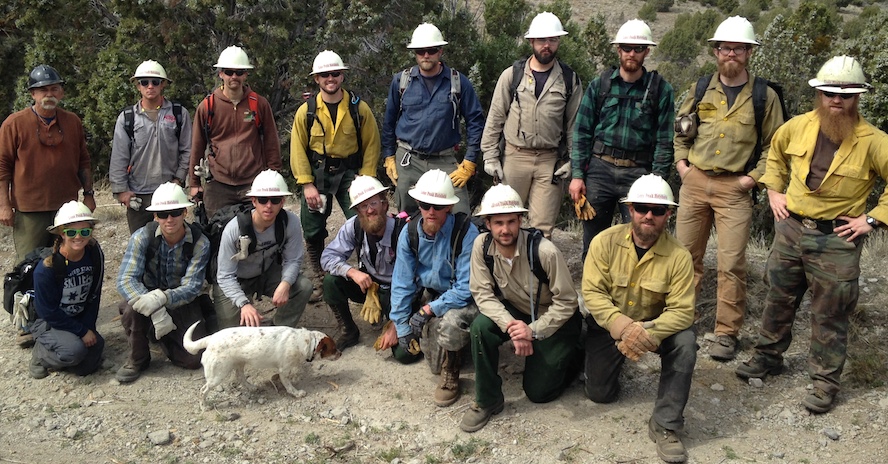My first journalism job was as a sports reporter for the Providence Journal-Bulletin in Rhode Island. I was the only woman in the department. At games covered by multiple papers, I was always the only female reporter.
Decades have passed. Women now make up nearly half of the workforce. Yet, they are still underrepresented in media and even more so in wildfire fighting and fuel reduction forces. They make up less than 10 percent of the wildfire force. Read In the Line of FIRE, part I and part II
That’s why it was notable to have met two women during the course of fuel reduction work on our property.
To serve on crews, women face the same physical tests and requirements as men. That makes it more challenging if we’re talking about 120-pound women hefting 70-pound packs. Read features here and here.
Dani Sadorf is the lone woman on the Lone Peak hotshot crew. The 24 year-old University of Washington graduate has backpacked and volunteered in Columbia, Peru, and Ecuador. She worked in New York for AmeriCorps, helping victims of Hurricane Sandy.
She had this to say about her first season fighting fires and working on fuel reduction in Utah (Last season, she worked on a fire crew in central Washington)
“I really enjoy the work. I love being outside every day and seeing how far I can push myself to work harder and longer days and to never give up. Sometimes I start singing “I’ll Make a Man Out of You” (from Disney’s Mulan movie) to keep myself going through the day.
“Sexual harassment does still happen, and I was unfortunate enough to experience it last year on a much different crew. But from what I know about these guys so far, I don’t believe it will be a problem. They treat me like one of the guys, and I appreciate that. I just have to get used to hearing, ‘Good job today, guys….and Dani.‘”
Brianna Binnebose serves as Wildland Urban Interface coordinator for Utah’s Department of Natural Resources, but she cut her teeth on forestry crews.
She weighed in:
“Overall, I would say that my experience in working in fire and other typically male-dominated work environments has been positive…I have had excellent managers, both male and female, who encourage and support their staff, regardless of gender.
“From a physical standpoint, where I have worked, the expectation has been that all members of the crew must pass the same physical evaluation and they held us to that.
“Immediately what comes to mind is my experience working on a crew in Idaho years back, where members not only had to pass the basic test but had additional crew standards, such as a run, hike, push-up/pull-up evaluation. It included hiking a 70+ pound pack to a site where we did a line dig and spike out as part of our critical training, as a way to make sure we could all hang.
“There were four females on the crew that year and we all completed the critical training, which was pretty awesome.”
Proving their mettle seems to be not just a job requirement, but a personal prerogative with many women I’ve met in male-dominated fields. Binnebose and Sadorf are cut from the same cloth as the women under scrutiny for combat readiness in the Marines as well as the special operations’ “Cultural Support Teams” which were the subject of the book, “Ashley’s War,” by Gayle Tzemach Lemmon.
My hat’s off to them.



